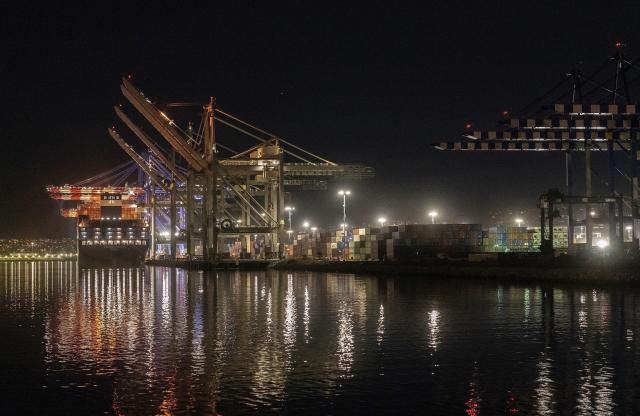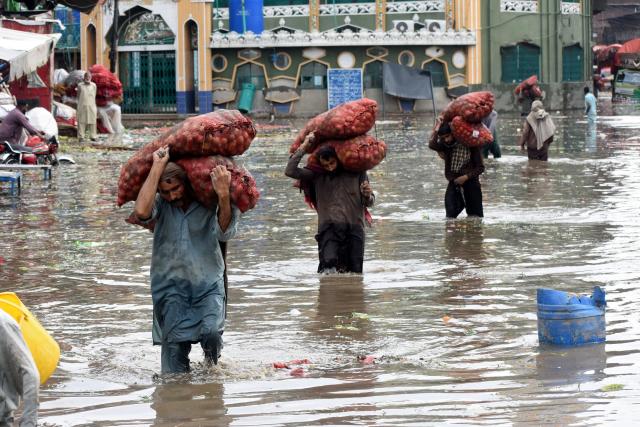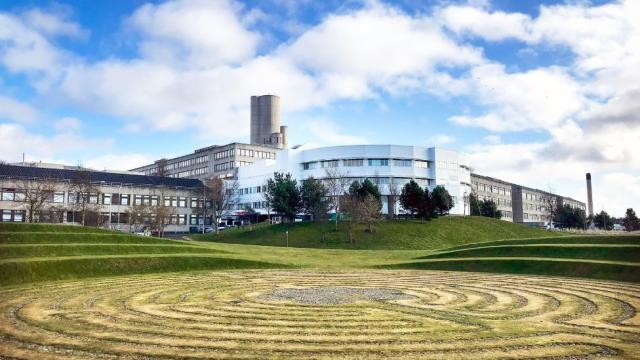Science Daily News | 08 Jul 2023

Views (123)

This week’s record-breaking global temperatures are likely highest in ‘at least 100,000 years’
Preliminary data shows that again on Thursday the planet’s temperature soared to a level that scientists told CNN are likely the warmest “going back at least 100,000 years.”

It’s been a week of record-breaking temperatures. On Monday, the average global temperature reached 17.01 degrees Celsius (62.62 degrees Fahrenheit), the highest in the NCEP’s data, which goes back to 1979. On Tuesday it climbed to 17.18 degrees Celsius, where it remained on Wednesday.
Before this week, the record in NCEP’s data was 16.92 degrees Celsius and was set in August 2016.
While the records are based on observational data sets that only go back to the mid-20th century, they are “almost certainly” the warmest temperatures the planet has seen over a much longer time period, according to Jennifer Francis, a senior scientist at Woodwell Climate Research Center.
Francis estimated that this week’s temperatures are the warmest “probably going back at least 100,000 years,” calling the records “a huge thing.”
Scientists know this because of the many millennia of climate data extracted from proxies like tree rings, ice cores and coral reefs – data that is a cornerstone to their understanding of the climate system and how humans have contributed to rapid global warming since the industrial revolution.
July is typically the planet’s hottest month, but temperatures are already in overdrive because of the combination of El Niño – a natural climate phenomenon in the Pacific Ocean – and the human-caused climate crisis, which is driving global temperatures steadily higher.
“It’s not a record to celebrate and it won’t be a record for long, with northern hemisphere summer still mostly ahead and El Niño developing,” Friederike Otto, senior lecturer in climate science at the Grantham Institute for Climate Change and the Environment in the UK, said earlier this week.
“It just shows we have to stop burning fossil fuels, not in decades, now,” Otto said. Temperature records aren’t just numbers, “but for many people and ecosystems it’s a loss of life and livelihood.”
SpaceX, NASA targeting Aug. 15 for launch of Crew-7 astronaut mission
SpaceX's seventh operational astronaut mission to the International Space Station now has a target launch date — Aug. 15.

SpaceX's next astronaut mission to the International Space Station (ISS) for NASA now has a target launch date.
Crew-7 has a very international feel, as its four crewmembers represent four different space agencies.
Crew-7 will be the first spaceflight for Moghbeli and Borisov and the second for Mogensen and Furukawa, NASA officials said. The quartet will spend about six months aboard the International Space Station, then come back home to Earth in their Dragon, a vehicle named Endurance.
RELATED STORIES:
Rare white-tailed eagles found dead in NI were illegally poisoned
The killing of the two white-tailed eagles in rural County Antrim is disgraceful, say police.

Two rare white-tailed eagles found dead in County Antrim two months ago were poisoned, police have confirmed.
Their remains were discovered near Glenhead Road between Ballymena and Larne in mid-May.
Post-mortem examinations found that both birds tested positive for the insecticide bendiocarb.
It is often used in commercial products but it is a criminal offence to leave it outside where wild animals could consume it.
The Royal Society for the Protection of Birds (RSPB) is offering a reward of £5,000 for information leading to a conviction over the death of the birds.
The charity's Northern Ireland director Joanne Sherwood described the illegal poisoning as "absolutely devastating".
How the birds consumed the insecticide is being investigated by police.
One of the eagles was born in Norway and brought as a chick to be released in the lower Shannon estuary in the Republic of Ireland in 2022.
The second bird, which was located nearby, was an unmarked, immature bird of unknown origin, potentially from Scotland or Ireland, according to the RSPB.
Police Supt Johnston McDowell said the test results suggested that an individual had placed the insecticide outside illegally.
"Bendiocarb is present in the trade product Ficam D, a powder which is only permitted for indoor use to control crawling insects such as wasps and ants," he said.
"So using this active ingredient in fields would be a breach of biocidal products regulation.
"The illegal killing of these beautiful birds in a popular rural area is disgraceful.
"For any individual to think that they can ignore the law and lay poisonous bait which has led to the killing of these birds is unacceptable and will not be tolerated."
Police officers, along with support from the National Wildlife Crime Unit, have been conducting house-to-house inquiries in the areas where the birds had been before they were found dead.
RSPB investigations officer Dean Jones said poison left out in the open was posed a huge risk to wildlife as well as people and pets.
"It is not only illegal, but extremely irresponsible and dangerous," he said.
"We implore that anyone who knows any information on who is responsible for the death of these birds to get in touch with the PSNI."
Floods and landslides kill at least 50 as monsoon rains lash Pakistan
At least 8 children are among the dead in Pakistan, where scientists say climate change is fueling more intense monsoons.

Lahore — At least 50 people, including eight children, have been killed by floods and landslides triggered by monsoon rains that have lashed Pakistan since last month, officials said Friday. The summer monsoon brings South Asia 70-80 percent of its annual rainfall between June and September every year. It's vital for the livelihoods of millions of farmers and food security in a region of around two billion people, but it also brings devastation. "Fifty deaths have been reported in different rain-related incidents all over Pakistan since the start of the monsoon on June 25," a national disaster management official told AFP, adding that 87 people were injured during the same period.
The majority of the deaths were in eastern Punjab province and were mainly due to electrocution and building collapses, official data showed. In northwestern Khyber Pakhtunkhwa province, the bodies of eight children were recovered from a landslide in the Shangla district on Thursday, according to the emergency service Rescue 1122's spokesman Bilal Ahmed Faizi. He said rescuers were still searching for more children trapped in the debris. Officials in Lahore, Pakistan's second-largest city, said it had received record-breaking rainfall on Wednesday, turning roads into rivers and leaving almost 35% of the population there without electricity and water this week. The Meteorological Department has predicted more heavy rainfall across the country in the days ahead, and warned of potential flooding in the catchment areas of Punjab's major rivers. The province's disaster management authority said Friday that it was working to relocate people living along the waterways.
Hopes phage therapy can offer patient lifeline
The 100-year-old method has been successfully used on a joint infection patient in Dundee.

Scottish surgeons have become the first in the UK to use a more than 100-year-old method to successfully treat a joint infection.
It is hoped the breakthrough can help to provide a lifeline to patients with antibiotic-resistant conditions.
NHS Tayside says its orthopaedic unit in Dundee is the UK's first to treat a joint infection using phage therapy.
It involved applying specially selected viral cells, called phages, to kill bacteria.
The treatment was used on an 84-year-old woman at Ninewells Hospital.
Suffering a badly infected hip and pelvis, she had gone through eight operations to cut out the infection, as well as a year and a half of antibiotic therapy.
Within two weeks of the phage treatment her infection had cleared. Her wound had healed for the first time since Christmas and the patient was set to return home within eight weeks of the therapy.
The procedure was carried out by consultant trauma and orthopaedic surgeon Mr Graeme Nicol with support from the UK's only clinical phage specialist, Dr Josh Jones, and infectious disease consultant Dr Daniela Munteanu.
"What the virus does, it attaches to the cell of the bacteria, it infiltrates it and it multiplies," Mr Nicol told BBC Scotland. "In doing that, it causes the bacteria itself to burst.
"So in other words, it just destroys the bacteria that is there – phage comes from the Greek devour so it works its way through this infection clearing it out of the body."
Once the infection is treated, the phages are destroyed by the patient's immune system.
The patient remained on anti-biotics throughout the process, Mr Nicol told BBC Scotland.
The surgeon said as well as being used on hip infections, the treatment could work on knees, ulcers, bladders and other areas where phages can be directly applied.
The therapy was first developed in 1919 and widely used in the early 20th century, particularly in the US where it was commonly used on cholera.
But following the discovery of penicillin by Scot Alexander Fleming in 1928, the use of phages declined in western nations because they are harder to manufacture and store than antibiotics.
Mr Nicol stressed that while phage therapy is not a replacement for antibiotics, it could be a "lifeline" for patients with antibiotic-resistant infections.
The UK Health Security Agency has warned of a "hidden pandemic" of antibiotic-resistant infections, while the World Health Organization has described them as one of the biggest threats to global health.
Mr Nicol said such cases were a "daily occurrence" in NHS Tayside. "We have patients that are stuck in hospital receiving intravenous antibiotics because there is no longer an oral option because the resistance is built up to such an extent that even more common infections are now becoming more resistant to antibiotics," he told BBC Scotland.
The surgeon said he hoped to see the phage therapy rolled out across the UK within the next two years, with NHS Tayside producing bespoke treatments for patients with severe infections.
"The patient doesn't have to travel here to get the treatment," Mr Nicol said. "That's a beauty of it.
"Every centre has their own microbiology and infectious disease unit and they will be able to look at it and tell us exactly which bacteria it is.
"From that point, the lab here can just simply look along and see if we have a virus that kills that bacteria. And then we can just ship it straight to them."
He said the "labour intensive" process – which involves finding suitable viruses in the environment and multiplying them in a laboratory – would require further investment to be expanded across the UK, but could be streamlined as it is developed.
Countries agree to slash shipping emissions but not enough to stay within warming limits
Maritime nations agreed Friday to slash emissions from the shipping industry to net zero by about 2050 in a deal that several experts and nations say falls short of what's needed to curb warming to agreed temperature limits. Countries at the meeting of the United Nations' International Maritime Organization in London, seen as key to curb global warming to 1.5 degrees Celsius (2.7 degrees Fahrenheit) since pre-industrial times, signed a deal for shipping emissions to reach net zero “by or around” 2050. The plan also calls for shipping emissions to be slashed by at least 20% but aiming for 30% by 2030 and at least 70% but working toward 80% by 2040 despite a push from Pacific nations — backed by Canada, the United States and the U.K. — for more ambitious targets.

Maritime nations agreed Friday to slash emissions from the shipping industry to net zero by about 2050 in a deal that several experts and nations say falls short of what's needed to curb warming to agreed temperature limits.
Countries at the meeting of the United Nations' International Maritime Organization in London, seen as key to curb global warming to 1.5 degrees Celsius (2.7 degrees Fahrenheit) since pre-industrial times, signed a deal for shipping emissions to reach net zero “by or around” 2050. The less firm deadline was agreed to take account of “different national circumstances.”
IMO Secretary-General Kitack Lim said Friday the deal “is in many ways a starting point for the work that needs to intensify even more over the years and decades ahead of us.”
“With the revised strategy that you have now agreed on, we have a clear direction, a common vision, and ambitious targets to guide us to deliver what the world expects from us,” Lim said to member states.
The German government welcomed the agreement, calling it “an important milestone for ensuring that international shipping makes a fair contribution to reaching the temperature goals of the Paris agreement.”
Transport Ministry spokesman Florian Druckenthaner said Germany had “lobbied massively” for the goal of net zero emissions by 2050.
Asked by The Associated Press whether Germany feels bound by the new targets, despite the fact that the interim goals are “indicative,” Druckenthaner said they are targets “we support and share.”
Ajithkumar Sukumaran, one of India's representatives at the talks, said the nation is "happy with the outcome but are still apprehensive of the extent to which the spirit of this declaration is going to be transformed to reality, particularly in ensuring that developing countries do not get affected by these emission targets.”
Sukumaran called for the IMO to put mechanisms in place to assess that the targets set in the deal are in fact being implemented.
“There is a clear disparity between its (the IMO’s) goals and those set by the Paris Agreement’s crucial 1.5 C target — a divergence that we can ill afford,” said Harjeet Singh, head of global political strategy at Climate Action Network International.
One analysis suggests both the less and more ambitious interim targets would see the shipping industry use up its carbon budget — a calculation of the amount of carbon dioxide various industries and countries can emit before global warming limits are breached — by early next decade.
“We do not have the time to wait for regulation or alternative fuels to catch up,” said Diane Gilpin, founder and CEO of Smart Green Shipping in a press statement. "We need to move with urgency and work with what we have.”
Simon Bennett, the deputy secretary general of International Chamber of Shipping, which represents 80% of the world’s commercial fleet, said the group “greatly welcomes the ambitious agreement” but urged the IMO to agree to the group's proposal of a voluntary levy on emissions.
Bennett said a levy would create a market for cleaner fuels that are currently not scalable or too expensive for the industry.
Some environmentalists are supportive of the idea of a levy, but say the ICS proposal hampers more ambitious ideas from going ahead.
The IMO’s targets are revised every five years. The previous target was for the shipping industry to cut its emissions by at least half from 2008 to 2050.
___
Associated Press writer Frank Jordans contributed from Berlin.
___
___
0 Likes
